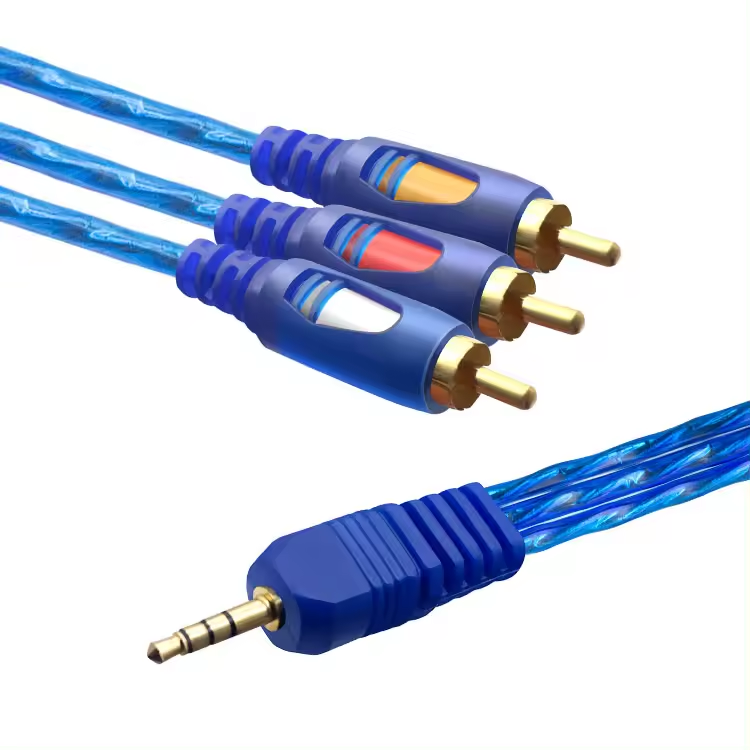01
Amewire Great Quality DVI to DVI-D 24+1 Cable Male to Male Digital Video Monitor Cable DVI Cable for HDTV Gaming Monitor PC

A DVI (Digital Visual Interface) cable is a vital component in modern digital communication and connectivity. Engineered to transmit digital video signals, the DVI cable serves as a bridge between various electronic devices, such as computers, monitors, projectors, and televisions.
The primary function of a DVI cable is to facilitate high-quality video transmission from the source device to the display device. It achieves this by converting digital signals into a format suitable for display on screens, ensuring clarity and precision in visual output.
DVI cables come in different variants, including DVI-D (digital-only), DVI-I (integrated digital and analog), and DVI-A (analog-only), each tailored to specific needs and compatibility requirements. DVI-D is the most common variant used for digital connections, while DVI-I supports both digital and analog signals, providing versatility in connectivity options.
Moreover, DVI cables support various resolutions, including standard definition (SD), high definition (HD), and even ultra-high definition (UHD), ensuring compatibility with a wide range of display devices and resolutions.
PVC (Polyvinyl chloride) is a versatile thermoplastic polymer renowned for its durability, flexibility, and affordability. Widely used in construction, manufacturing, and consumer goods, PVC exhibits exceptional resistance to abrasion, chemicals, and weathering. Its adaptability allows for easy molding into various shapes and sizes, making it ideal for pipes, window frames, flooring, and packaging. Despite environmental concerns surrounding its production and disposal, PVC remains popular due to its cost-effectiveness and wide-ranging applications. With proper handling and recycling initiatives, PVC continues to serve as a valuable material in countless industries, contributing to modern infrastructure and everyday products.


A gold-plated head refers to a metal component, typically made of copper or another base metal, that has undergone a process of electroplating with a thin layer of gold. This layer of gold, often just a few microns thick, is applied onto the surface of the base metal through electroplating techniques, where an electric current is used to deposit the gold onto the substrate. The purpose of gold plating on a connector or head is primarily to enhance conductivity, corrosion resistance, and durability. Gold is an excellent conductor of electricity and is highly resistant to tarnishing and corrosion, making it an ideal choice for connectors or heads that require reliable electrical contact over time. Additionally, the aesthetic appeal of gold plating adds a touch of luxury and prestige to electronic devices, connectors, or accessories, making them visually appealing while ensuring optimal performance and longevity.
CCS, or Copper-Clad Steel, is a composite material widely used in various applications requiring robust electrical conductivity and mechanical strength. It consists of a steel core with a layer of copper bonded to its surface through a specialized manufacturing process. This unique construction combines the high tensile strength and durability of steel with the superior electrical conductivity of copper. CCS finds extensive use in telecommunications cables, where it provides efficient transmission of electrical signals over long distances while minimizing signal loss and ensuring reliable communication. Additionally, CCS is employed in power transmission lines, grounding rods, and antenna systems due to its excellent conductivity and resistance to corrosion and environmental degradation. This innovative material offers a cost-effective solution for applications demanding both electrical performance and mechanical resilience, making it a preferred choice across various industries for optimizing performance and longevity in critical infrastructure and communication networks.

















